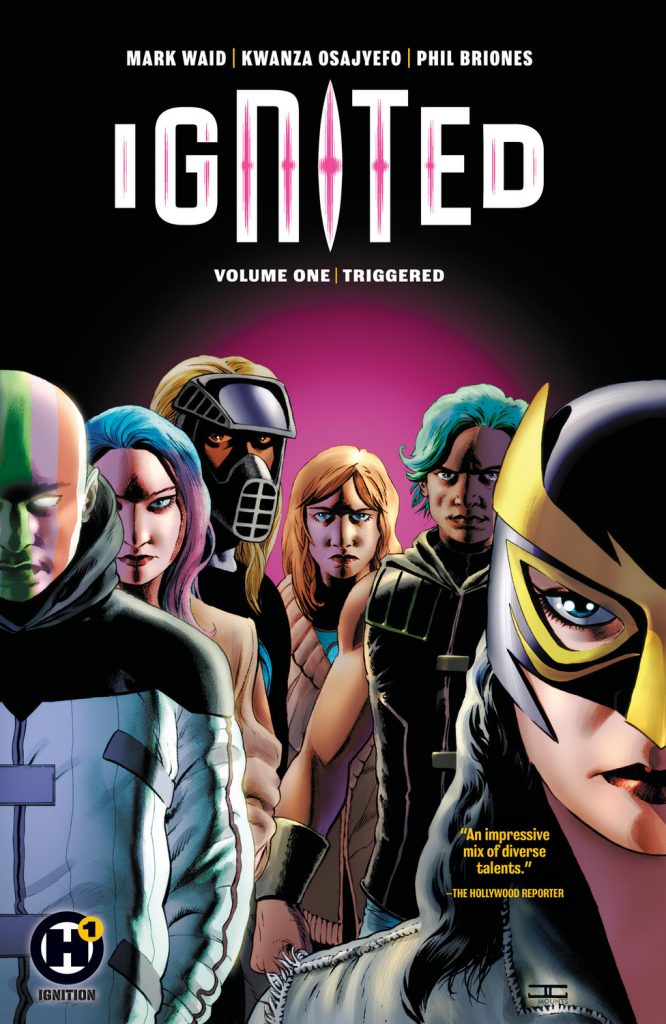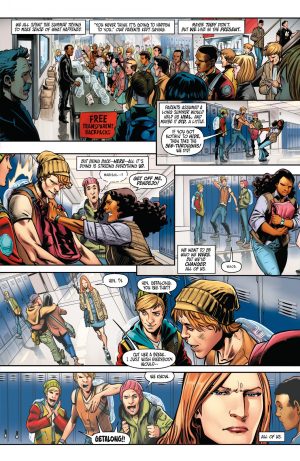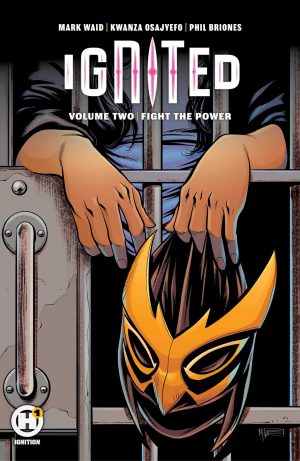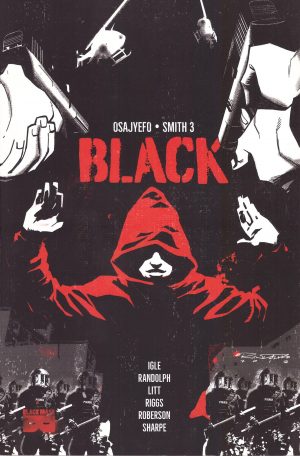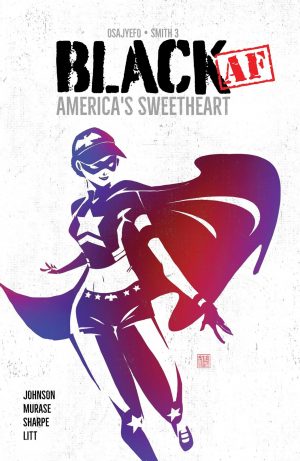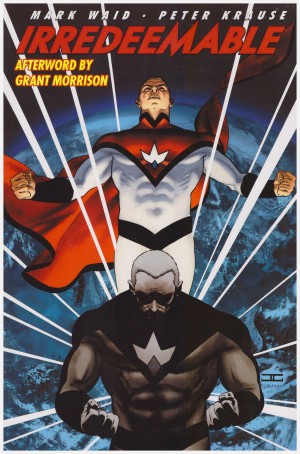Review by Frank Plowright
Ignited is the term applied to people in an otherwise ordinary world who’ve suddenly developed super powers, and the series goes further than most in acknowledging the actual world, beginning with reflection on a high school shooting and a radio DJ making money from peddling it as faked.
It’s a powerful opening continuing by showing how assorted survivors feel on the first day of a new school year, and the precautions taken by the school in order to avoid a repeat. It’s unusual to see the pro and con arguments so eloquently laid out in what’s being sold as a superhero graphic novel, and better still, it’s not just a sensationalistic opening, it’s the basis for most of Triggered. Just as there are different responses within the school, the circle moves outward to the alternate reactions of parents. Writers Kwanza Osajyefo and Mark Waid escalate the paranoia exceptionally well over a first chapter that only starts and ends with superheroes, yet engages all the way through.
The greater superhero presence manifests in the second chapter. The premise of teenagers acquiring super powers and being uncertain about their use has been formularised over the years, but Osajyefo and Waid mess with that formula by having at least a couple of the teens rapidly coming to terms with what they’re capable of, relishing it, and well aware of what they consider right. What is considered adult language is scattered throughout, but what’s the point of aiming at a form of realism if words high school kids use and hear every day are off limits? The super powers are also interesting, and show how context is everything. The cool rebel kid gets the powers only ever used by a DC character as a joke.
Phil Briones has plenty of superhero experience, so gives the pages a realistic gloss with distinctive people. Much of the story is told via head and shoulders views, but Briones supplies considerable variety within that, fills the panels with crowds where they’re needed, shows what the cast feel and devises interesting little design quirks for the superhero effects.
The narrative switches between a present day and two months in the past, continuing both sides of the arguments spewed out by a divided USA every time a school shooting occurs. Worth something is placing the reactions of the affected kids front and centre, even in the context of superhero story, and it’s a welcome alternative to entrenched dogma. However, when that spreads briefly to other political issues it seems more like preaching, although it’s setting up events in Fight the Power.
Just as there are no easy answers to the problems in the real world, Osajyefo and Waid don’t provide them here. Four entertaining chapters work well as an introduction. In addition to the commonly provided extras after the story, space is given to two people who were present at school shooting incidents to write whatever they want. Kindra Neely considers too much time is spent focussing on trying to make sense of the shooters, and Rachel Maurice, survivor of an earlier incident writes about the difficulty she and her fellow students had accessing support services. Any fiction using such flashpoints is going to be open to accusations of sensationalism and lack of consideration, but giving survivors a platform acknowledges their concerns.
